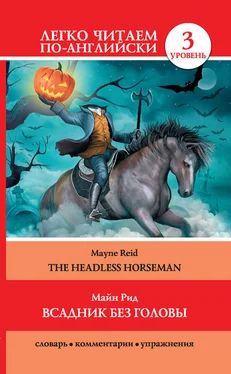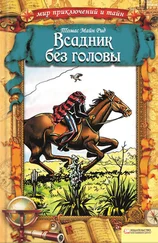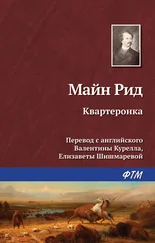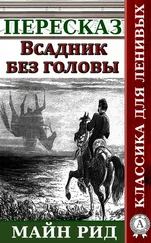Did any one know where the horse-hunter had his home?
No one could state the exact locality; though there were several who believed it was somewhere among the head-waters of the Nueces, on a creek called the “Alamo.”
To the Alamo, then, did they determine upon proceeding in quest of the missing man, or his dead body – perhaps, also, to find that of Maurice the mustanger; and, at the same time, avenge upon the savage assassins two murders instead of one.
***
Notwithstanding its number, the expedition pursued its way with considerable caution.
There was reason. The Indians were upon the war-trail. Scouts were sent out in advance; and professed “ trackers” [40]employed to pick up, and interpret the “sign.”
Shortly after entering an opening, through which passes a path that leads to the Alamo, one of the trackers, Spangler, was seen standing by the edge of the thicket, as if waiting to announce some recently discovered fact.
“What is it?” demanded the major, spurring ahead of the others, and riding up to the tracker. “Sign?”
Spangler answered that there were plenty of them. He pointed to the tracks of two horses that had gone up the opening, and come back again. He said he hadn’t been far enough up the opening to make out what it meant– only far enough to know that a man had been murdered. Though he hadn’t seen a dead body, not even a hair of the head.
“What then?” asked the major.
“Blood, a regular pool of it. Come and see for yourself. But, “continued the scout in a muttered undertone, “if you wish me to follow up the sign as it ought to be done, you’ll order the others to stay back.”
About fifty yards further on, Spangler stopped, and the major had a chance to get evidence of the trackers’ words. There was a big pool of blood on ground.
“Whose do you think it is, Spangler?”
“That of the man we’re in search of – the son of the old gentleman down there. That’s why I didn’t wish him to come forward. We need to find out how the young fellow has come to be thrown in his tracks. That’s what is puzzling me.”
“How! by the Indians, of course? The Comanches have done it?”
Spangler didn’t think so. If the Indians had been here, there would be forty horse-tracks instead of four, and they’re made by only two horses. Both these were ridden by white men. One set of the tracks has been made by a mustang, though it was a big one. The other is the hoof of an American horse.
“We must follow up the tracks of the horses, after they started from this. There’s nothing more to be learnt here. We may as well go back, major. Am I to tell Mr Poindexter?”
“You are convinced that his son is the man who has been murdered?”
“Oh, no; not so much as that comes to. Only convinced that the horse the old gentleman is now riding is one of the two that’s been over this ground last night – the States horse I feel sure. I have compared the tracks; and if young Poindexter was the man who was on his back, I fear there’s not much chance for the poor fellow.”
“Have you any suspicion as to who the other may be?”
“Not a spark, major. If it hadn’t been for the tale of Old Duffer I’d never have thought of Maurice the mustanger. True, it’s the track of a shod mustang; but I don’t know it to be his. Surely it can’t be? The young Irishman isn’t the man to stand nonsense from nobody; but he is not the one to do a deed like this – that is, if it’s been cold-blooded killing”
“I think as you about that.”
“As to the disappearance of the dead body – for them two quarts of blood could only have come out of a body that’s now dead. We must follow the trail, however; and maybe it’ll fetch us to some sensible conclusion.”
***
The party soon after came up with the tracker, waiting to conduct them along a fresh trail.
In his own mind Spangler had determined the character of the animal whose footmarks he was following. He knew it to be a mustang – the same whose hoof-mark he had seen deeply indented in a sod saturated with human blood.
The tracks went not direct; but here and there zigzagging; occasionally turning upon themselves in short curves; then forward for a stretch; as if the mustang was either not mounted, or its rider was asleep in the saddle!
Spangler did not know what to think. He was mystified more than ever. A spectacle that soon afterwards came under his eyes – simultaneously seen by every individual of the party – so far from solving the mystery, had the effect of rendering it yet more inexplicable.
When a man is seen mounted on a horse’s back, seated firmly in the saddle, with limbs astride in the stirrups, body erect, and hand holding the rein – in short, everything in air and attitude required of a rider; when, on closer scrutiny, it is observed: that there is something wanting to complete the idea of a perfect equestrian; and, on still closer scrutiny, that this something is the head, it would be strange if the spectacle did not startle the beholder, terrifying him to the very core of his heart.
And this very sight came before their eyes; causing them simultaneously to rein up. The eyes of all were turned in the same direction, their gaze intently fixed on what was either a horseman without the head, or the best counterfeit that could have been contrived.
What was it?
There could be heard only mutterings, expressive of surprise and terror. No one even offered a conjecture.
Was it a phantom? Surely it could not be human?
“It is old Nick [41]upon horseback!” cried a fearless frontiersman, who would scarce have quailed to encounter his Satanic majesty even in that guise. “It’s the devil himself.”
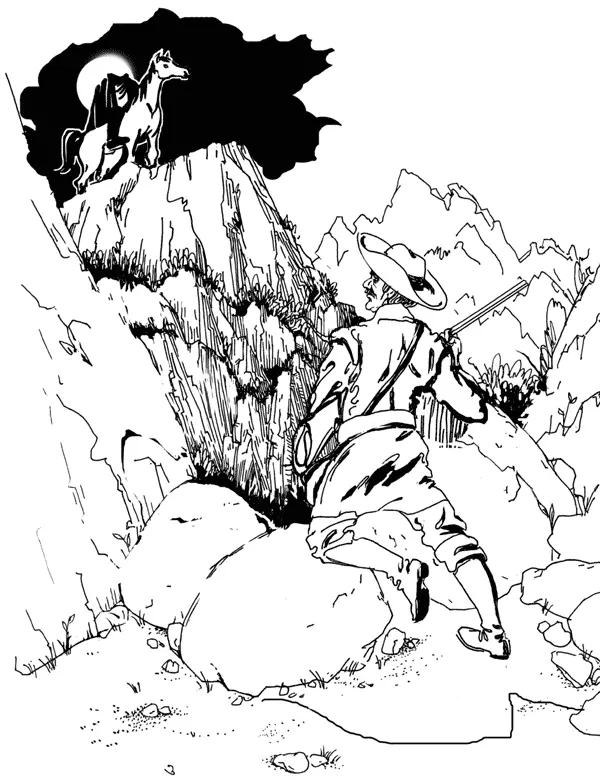
The boisterous laugh which succeeded the profane utterance of the reckless speaker, while it only added to the awe of his less courageous comrades, appeared to produce an effect on the headless horseman. Wheeling suddenly round – his horse at the same time sending forth a scream that caused either the earth or the atmosphere to tremble – he commenced galloping away.
Answer the following questions:
1) Who was absent at breakfast? Why?
2) What did the planter’s family see at the gate? Why did it “inspire all three with the most terrible apprehensions”?
3) Who was thought to be the murderer of Henry Poindexter?
4) What had happened in the hotel according to its owner’s account? Where did the expedition head for?
5) Why was Spangler sure that somebody had been killed?
6) Whose tracks did Spangler find? What conclusion did he draw?
7) What did the party see? Why did it scare them?
The party of searchers, under the command of the major, was not the only one that went forth from Fort Inge on that eventful morning.
Long before a much smaller party, consisting of only four horsemen, was seen setting out from the suburbs of the village, and heading their horses in the direction of the Nueces. They were all Mexicans.
One of the four was a man of larger frame than any of his companions. He rode a better horse and was more richly appareled. He was a man of between thirty and forty years of age. But for a cold animal eye, and a heaviness of feature that betrayed a tendency to behave with brutality – if not with positive cruelty – the individual in question might have been described as handsome.
It was not his looks but his deeds and disposition that had led to his having become known among his comrades by a peculiar nick-name; that of an animal well known upon the plains of Texas. “El Coyote.”
Читать дальше
Конец ознакомительного отрывка
Купить книгу
